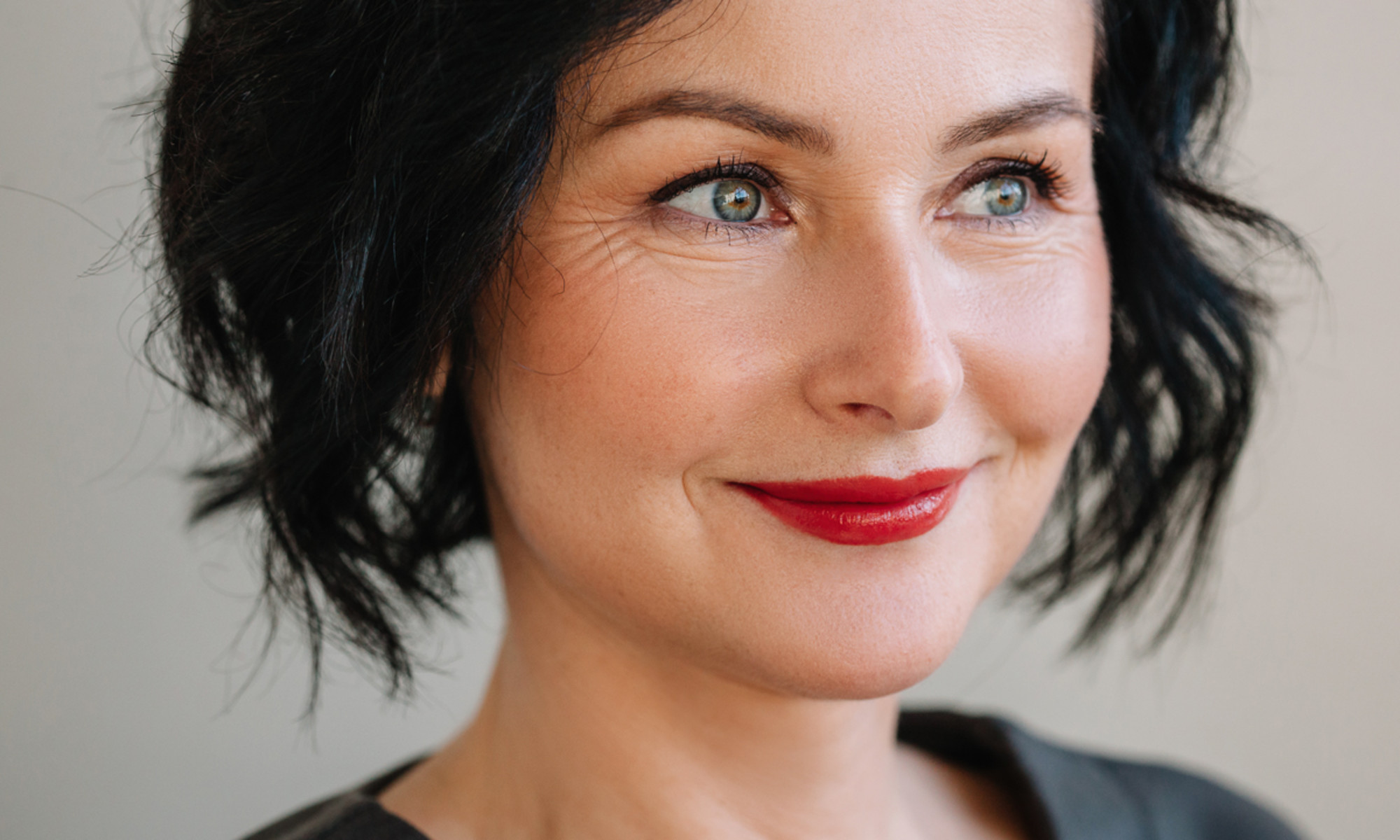Should You Ever Apply Serum After Your Moisturizer? Only In *This* Instance
What you put on your skin is important, but so is the order in which you do it.


mbg Assistant Beauty Editor
mbg Assistant Beauty Editor
Hannah Frye is the Assistant Beauty Editor at mindbodygreen. She has a B.S. in journalism and a minor in women’s, gender, and queer studies from California Polytechnic State University, San Luis Obispo. Hannah has written across lifestyle sections including health, wellness, sustainability, personal development, and more.
Image by Leandro Crespi / Stocksy December 11, 2022 Our editors have independently chosen the products listed on this page. If you purchase something mentioned in this article, we may In the world of skin care, there’s a plethora of options to choose from for every single step. While picking the right product for your skin type is important, so is the order in which you apply it. This is especially true when it comes to active serums and creamy moisturizers. So we’re here to answer the common inquiry: Which comes first, serum or moisturizer? Plus, we’ll dive into why each step is so essential and the best ingredients to look for. Let’s get into it. 
Advertisement
This ad is displayed using third party content and we do not control its accessibility features.
What goes first: Serum or moisturizer?
The short answer? Serums go first, no doubt about it. “It's best to layer lighter products like serums before heavier products like moisturizers,” board-certified dermatologist Hadley King, M.D. tells mbg.
This is because moisturizers contain some occlusive ingredients, which help them trap moisture in the skin but prevent other ingredients from penetrating. So if you layer on a serum over your face cream, the likelihood of your skin absorbing that product and thus reaping all of the benefits is slim.
However, there is one caveat here: “If you want to decrease the potency of a serum—like if it contains potentially irritating ingredients like retinol or salicylic acid, then applying a moisturizer first could help make the serum less potent and less irritating,” King notes.
This technique is often referred to as the “retinol sandwich,” where you layer moisturizer under and over your retinol to buffer the effect. But should you do this with other serum ingredients like hyaluronic acid, niacinamide, and vitamin C? No, unless you think these serums might trigger a negative reaction from the skin (which is pretty unlikely for most people).
In fact, the deeper these ingredients can penetrate, the better. So to sum it all up: Potentially irritating serums can be buffered by using a moisturizer before and after, but otherwise, all serums should be applied first.
How to layer your products.
While we’re on the topic of skin care steps, let’s just go from start to finish so we’re clear. We’ve written an in-depth guide to layering skin care products before, but here’s a quick overview.
Advertisement
This ad is displayed using third party content and we do not control its accessibility features.
An evening cleanse is non-negotiable. If you’re taking off makeup or sunscreen at the end of the day, you may even opt for a double cleanse. This means taking an oil-based cleanser to dry skin, adding a bit of water to your hands and massaging further into the skin, rinsing that cleanser off, and following up with a gentle water-based cleanser.
This is always the first step, even if it’s just a splash of water in the morning. A clean canvas is necessary for all that follows.
2.
Toner or essence (optional).
Some like to use a toner post-cleanse, whether it be an astringent product or a hydrating essence—here’s a deeper explanation of what toners are and the benefits they provide.
Many toners also include pre- and post-biotics, which help feed your skin microbiome. Plus, some essences add a boost of hydration. That being said, many of the ingredients found in this second step can be found in serums as well.
Advertisement
This ad is displayed using third party content and we do not control its accessibility features.
3.
Serum (optional but encouraged).
Remember: Serums should hit the skin before your moisturizer. If you’re using a retinol serum or a chemical exfoliant, be sure to apply it to your skin once your toner has dried down a bit. When applied to wet skin, products tend to absorb deeper into the pores—which you don’t want for those potentially irritating actives.
On the flip side, if you’re using a hyaluronic acid serum, then you should definitely apply it to damp skin. See, hyaluronic acid, along with aloe vera and glycerin, is categorized as a humectant. Meaning, it pulls water into the skin, so you want to give it the water it need to do its job properly.
You can also layer serums, such as hyaluronic acid and vitamin C for a brightening, plumping duo. However, you should never mix retinol with vitamin C or chemical exfoliants, as most retinol formulas are not designed to interact with other actives. (More on serums 101 below.)
Next up, we have moisturizer. If you have oily skin, you might prefer a light-weight, water-based moisturizer. Those with drier skin types may prefer something that resembles more of a cream and less of a gel—it all boils down to skin type and personal preference.
This step is definitely a must, both day and night. Later, we’ll dive a bit deeper into why you should use these products on a daily basis and how to pick the best one for your skin.
Advertisement
This ad is displayed using third party content and we do not control its accessibility features.
Eye cream is technically optional, but if you’re looking to brighten dark circles, ease fine lines, or reduce under-eye puffiness, then it’s basically essential. See, these little products contain actives specifically formulated for the thin, delicate skin under the eyes.
If you were to use a strong retinol or vitamin C serum that’s formulated for the face in this area, you run the risk of irritation (which can lead to more dark circles and wrinkles, we must note).
Here’s a list of our top picks for each concern if you’re ready to shop.
6.
Oils (optional, p.m. only).
During your evening routine, using oils as a final layer can help lock in moisture. If you have oily skin, you may not need this step, but those with dry skin will love it.
This method is often called “natural slugging,” as you’re applying an occlusive layer over the rest of your skin care, but using a natural, botanically-derived oil rather than petrolatum jelly.
If you’re prone to breakouts, be sure to pick an oil that’s noncomedogenic, like jojoba, rosehip, or grapeseed oil.
Advertisement
This ad is displayed using third party content and we do not control its accessibility features.
Whether you’re in the sun for five minutes or five hours, you should be wearing SPF. Reserve this step for mornings only, and be sure to apply to both your face and neck. If you’re out for more than two hours, reapply your sunscreen for the best protection. Find our favorites here.
This is where makeup will come in, should you choose to wear it. Letting your skin care sit for five minutes before applying your base makeup (be it foundation, tinted SPF, concealer, etc.) will ensure that the products don’t slip right off your dewy, hydrated canvas.
What's a serum?
Now, what is a serum, really? Well, it’s not so black and white: Serums may include a wide variety of ingredients, from antioxidants to hydrators to retinol, and others may even cocktail a few different players.
But on a technical level, “Serums have higher percentages of active ingredients in a light formulation that absorbs quickly and should be followed with a moisturizer,” King explains. Serums are viewed as the “treatment” step in your skin care routine. They're probably your most potent product—and therefore are often the most expensive.
While the standard skin care routine from a few years back called for actives in every single step (remember that chemical exfoliant craze?), the modern-day approach is totally different. “Instead, use really active ingredients placed within a really hydrating and barrier-supporting routine, whether it's a professional treatment or your home care,” professional esthetician Sofie Pavitt once told mbg.
But which ingredients you should choose ultimately depends on your skin type, goals, and what other products you’re using in your routine. As a cardinal rule: Don’t mix exfoliants with vitamin C or retinol—and be sure to use the potentially irritating ingredients on dry skin, or sandwich them if your skin is extra sensitive.
Common serum ingredients.
Because there are so many different serums out there, we’ll do a quick breakdown of some of the most common ingredients. This way, you’ll know what to keep an eye out for given your skin goals and concerns.
Vitamin C.
Hyaluronic acid.
Niacinamide.
Retinol.
AHAs & BHAs.
AHAs and BHAs exfoliate the skin, sloughing off dead cells. BHAs10 can also break through oil and sebum, making them a great option for those with acne-prone skin.
What is a moisturizer?
Moisturizer is your hydrating step, and it’s one of the most important parts to any skin care routine. “Moisturizer should have humectants, emollients, and occlusives and usually lower percentages of active ingredients,” King explains.
It’s important to have each of these in your product to ensure all-around hydration. As stated above, humectants help pull in water, while emollients nourish and soften the skin, all to have occlusives lock it all in—you can read more about the different types of hydrators here.
This combination helps to maintain a healthy skin barrier—and remember, skin care is a tool that helps you tend to your largest organ, not just work on aesthetics. So put some time and effort into picking a product that’s best for you (and one that you’ll want to use every day). Here are a few tried-and-true picks to get you started.
Common moisturizer ingredients.
Now, we’ll run through a few common ingredients in classic moisturizers and what they can do for the skin. Plus, we’ll call out which skin types may benefit from each ingredient the most.
Plant butters.
Plant butters like shea butter serve as rich emollients and help soften the skin. These are great for every skin type.
Botanical oils.
Botanical oils like jojoba, squalene, grapeseed, rosehip, moringa seed, etc., all help lock in moisture, provide a dewy glow, and often contain antioxidants. If you have acne-prone skin, stick with noncomedogenic oils or ask your dermatologist for suggestions.
Ceramides.
Ceramides are lipids that nourish the skin and support healthy skin function—some experts describe them as the “glue” that holds the skin together. Every skin type can benefit from ceramide-infused moisturizers.
Oat extracts.
Oat oil helps boost moisture in the skin, reduce inflammation, and ease irritation. This ingredient is especially beneficial for sensitive or reactive skin types.
Aloe.
Aloe vera extract is a soothing humectant that helps hydrate the skin. It may even help fade dark spots and tend to acne.
Water.
No moisturizer is complete without the essential H20. As a general rule: Gel-like formulas and water-based moisturizers will be lighter and more bouncy (which is great for oily skin types) while thicker creams contain more butters and oils (ideal for dry skin).
Do you need to use a serum?
If you’re interested in a basic, no-frills skin care routine, you definitely don’t need a serum to get by. However, if you’re looking for greater improvements, whether you want to brighten your complexion, ease fine lines and wrinkles, or treat acne, then you’ll likely benefit from a serum.
And while some serums come with a high price, there are definitely great affordable options out there, too. If you’re on a budget, invest in complex serums like retinol and vitamin C, and snag more affordable hyaluronic acid, niacinamide, and other single-ingredient serums.
This is because vitamin C and retinol are two ingredients that are notoriously unstable, so the formulation takes a bit more T.L.C., while simple serums are, well, simple. To ease your search, here are a few of our favorite serums by ingredient category:
FAQ
How long should you wait to apply moisturizer after serum?
Generally speaking, you don’t need to wait for your serums to “soak in,” before applying moisturizer. However, if you do want to wait, don’t let your serum sit for more than a minute before applying moisturizer, as it could result in dryer skin.
What is best: Serum or moisturizer?
Moisturizer is more essential to your overall skin health than serums. However, serums are potent products that can help you achieve goals like: Easing fine lines and wrinkles, treating acne, brightening your complexion, etc.
Hyaluronic acid serum or moisturizer first?
Apply your hyaluronic acid serum right after cleansing. Apply it to damp skin to help pull water into your pores. Then follow up with your moisturizer. Simple!
The takeaway.
All in all, keep applying your serum before your moisturizer, unless you’re using potentially irritating topicals like chemical exfoliants or retinol—in which case you can sandwich the active between layers of moisturizer, if you really want to. If you’re ready to take the next step, here’s a full guide to creating a night time skin care routine that’s best for your skin type and goals.

 JaneWalter
JaneWalter -v1646695196476.jpg?1148x800)

































